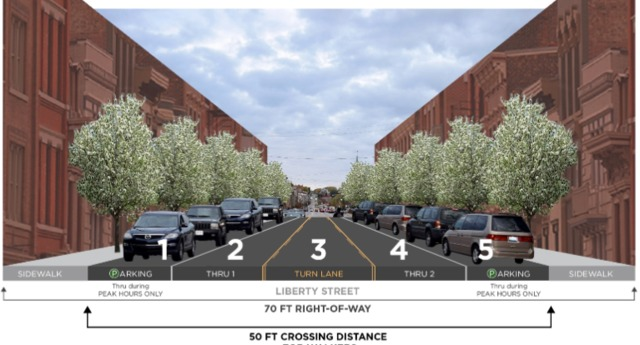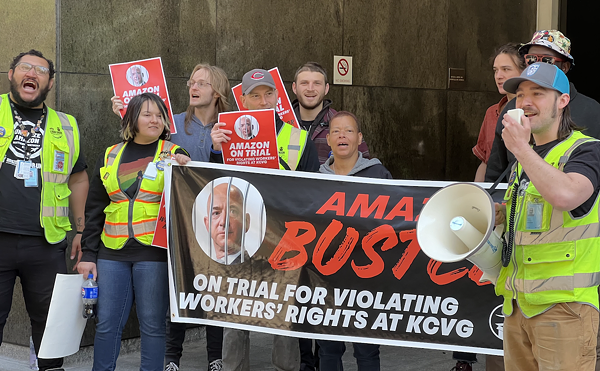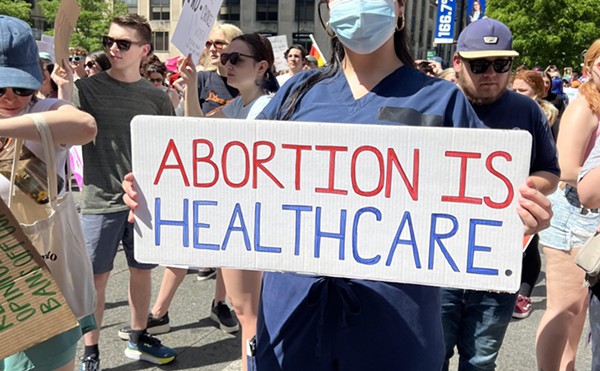
The future of a road-calming project in the works for more than six years in Over-the-Rhine is unclear after Cincinnati Mayor John Cranley today vetoed a Cincinnati City Council ordinance funding it.
Cranley said the ordinance introduced by Councilman Chris Seelbach and approved with votes from council members Tamaya Dennard, Greg Landsman, Seelbach, P.G. Sittenfeld and Wendell Young, represents wasteful spending because it would require a nearly $1 million relocation of a 15-year-old water main. The mayor instead touted a less-extensive plan designed by city administration.
But supporters of the original plan on council say city government should honor what "hundreds" of residents and other stakeholders worked to design.
"A number of us, Mr. Landsman, Mr. Sittenfeld and I, have all worked to overcome the obstacles," Seelbach said in council yesterday. "This is a simple fix. This should not be a controversial project. The project in front of us today is what the neighborhood supports... it's what everyone has worked six and a half years on with the Department of Transportation and Engineering."
The original $3.4 million plan, drawn up after years of public input and design sessions and supported by neighborhood groups, would reduce Liberty Street as it runs between north and south Over-the-Rhine from seven lanes to five lanes, reclaiming about 20 feet of land on the street’s south side that proponents say could be used for development. Onstreet parking in the remaining curb lanes would be restricted between 7 a.m. and 7 p.m. under that version of the plan.
Liberty Street, which was expanded from a small street to a major thoroughfare connecting I-75 to other major routes in the 1960s, has long been the focus of pedestrian safety concerns. It is also seen as a division between booming southern OTR and the neighborhood’s less-developed northern half.
The alternate plan Cranley supports would keep the extra lane on either side of the road for parking but build bump-outs for pedestrian crossings at key intersections. Cranley says this version saves 85 parking spots, increases pedestrian safety and won’t create bottlenecks that he believes could happen if someone fails to move a car parked in the curb lane during the hours restricted under the original plan.
Cranley also said that the city doesn't have any plans for the "huge expanse" of reclaimed right-of-way, which supporters say the city could sell to recoup some costs. Cranley mentioned tent cities that popped up along Third Street downtown earlier this summer, implying that the new right-of-way on Liberty could see similar encampments.
The concerns over the project popped up recently. Until this summer, the original plan had the city’s green light and was funded for completion. However, Acting City Manager Patrick Duhaney suspended the project after he says the city learned about the need to move the water main under Liberty Street. The main has 85 years of useful life left, city administration says, and must be moved if the original road-calming plan is carried out so that it can be easily accessed for maintenance.
That revelation came around the same time FC Cincinnati began ramping up plans for construction of its Major League Soccer stadium in the nearby West End. That’s caused some — including council members pushing for the original road-calming plan — to charge that the project is being held up over concern that it would disrupt traffic flow to future FCC games.
A memo from Duhaney cites lack of study about how FCC traffic would be affected by the project. But Cranley has called charges that FCC had anything to do with the project’s delay and his veto “conspiracy theories,” saying that he believes city administration’s plan is better and cheaper.
Seelbach’s ordinance would pay for the water main relocation via money from an OTR tax increment financing district. Council could still override Cranley’s veto if supporters can muster a sixth vote for the original street calming plan.





